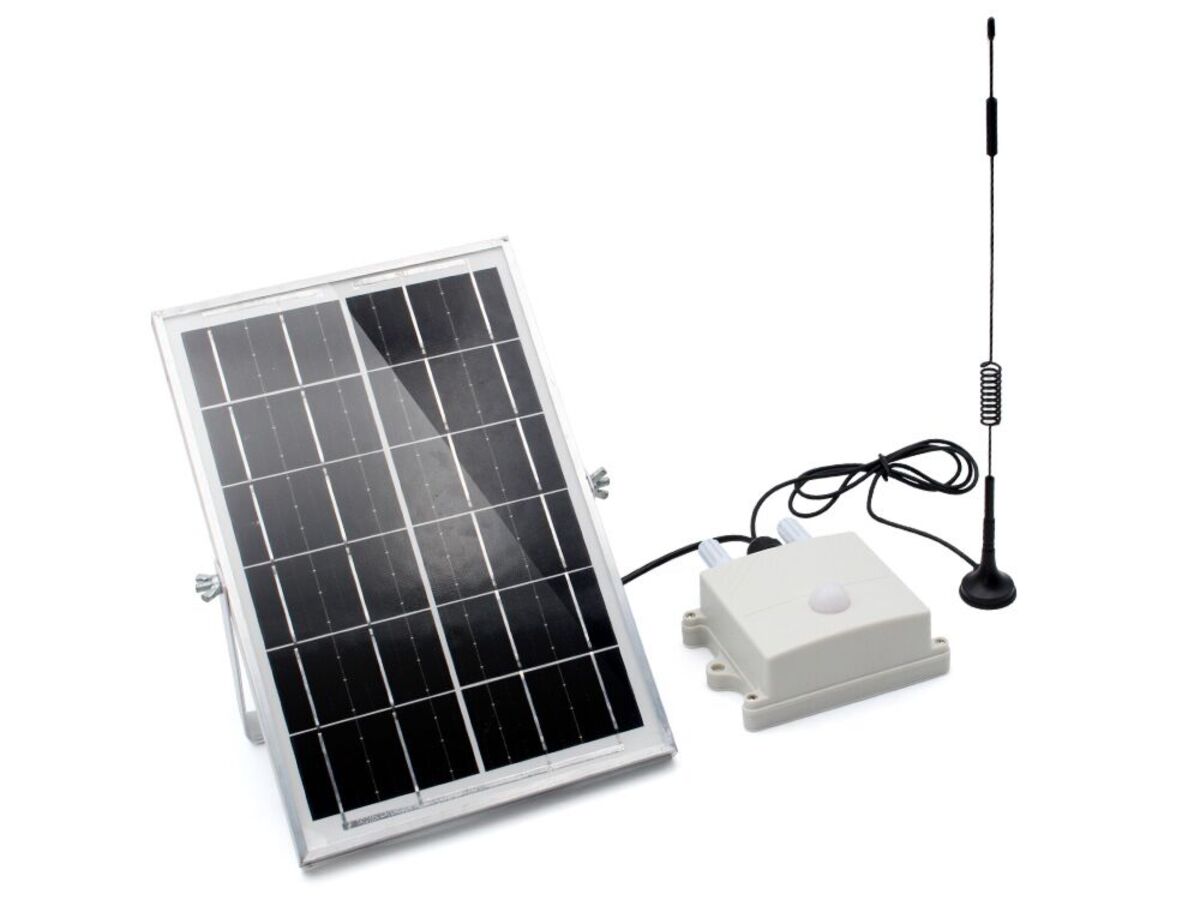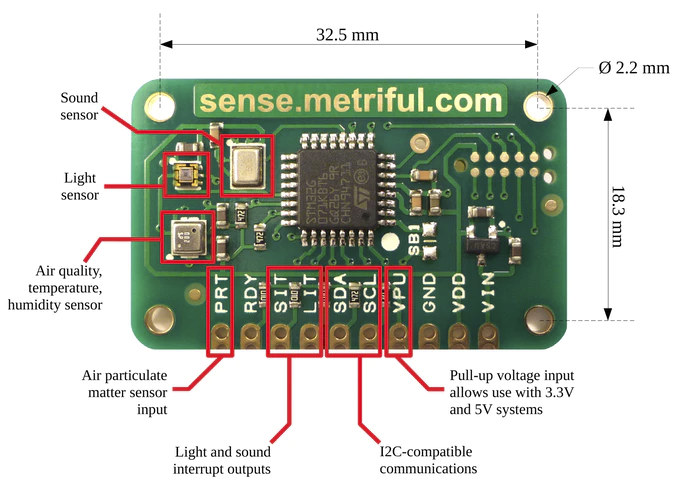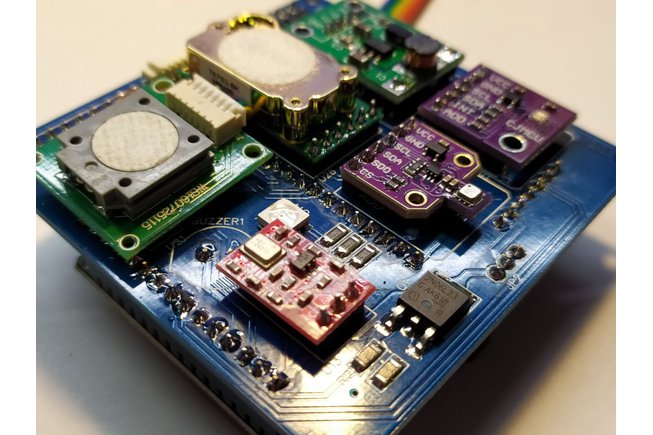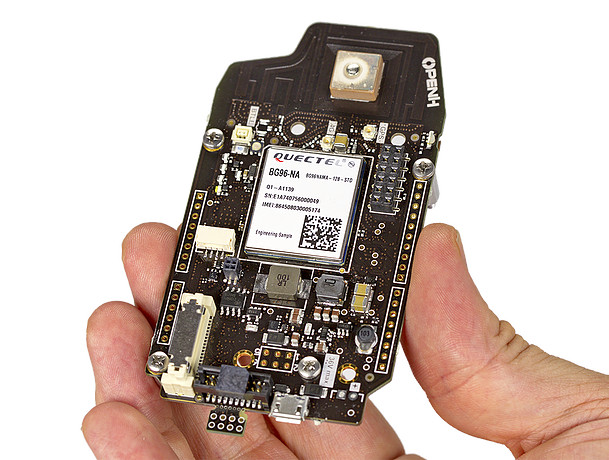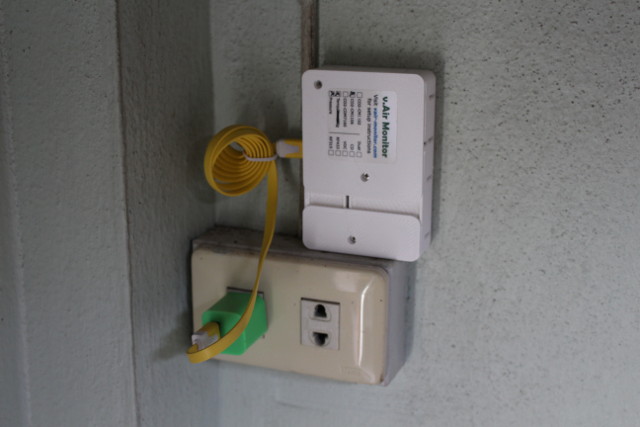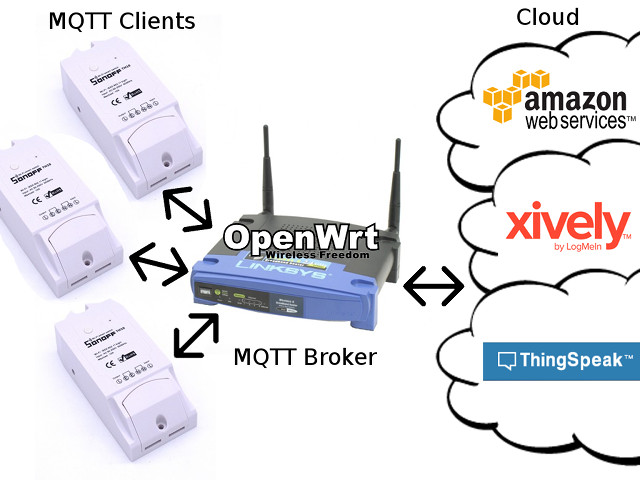The NBIOT/LTE-M Air Monitor is a solar-powered device that utilizes a combination of ESP32-S3 and SIM7080G modules for remote environmental monitoring. It monitors and transmits environmental parameters such as temperature, humidity, CO2, TVOC, and light intensity using low-power wide-area network (LPWAN) technology ensuring efficient power consumption, durability, and reliable data transmission. Previously we have written about similar environment monitor devices like the Airlytix ES1, Sonoff SC WiFi, V-Air Monitro, and devices like Arduino MKR IoT Carrier Rev2, Radair mini gateway, and Nicla Sense ME designed for environment monitoring applications. Feel free to check those out if you are interested in this type of product. NBIOT/LTE-M Air Monitor specification Wireless Module – ESP32-S3-WROOM-1-N16R8 Espressif Systems ESP32-S3R8 – Dual-core Tensilica LX7 @ up to 240 MHz with vector instructions for AI acceleration, 512KB RAM, 8MB PSRAM Storage – 16 MB flash Wireless – 2.4 GHz WiFi 4 and Bluetooth PCB antenna Cellular connectivity Module – SIMCom SIM7080G LTE Cat […]
STM32 based Indoor Air Quality Sensor Connects to Raspberry Pi or Arduino (Crowdfunding)
Even before the COVID-19 lockdown, people spent most of their time indoors (around 90% according to some studies), so it’s important to monitor air quality and other metrics like light and sound levels in our homes, workplaces, schools, cars, etc… Metriful Sense indoor environment monitor does just that by reporting multiple metrics such as temperature, humidity, particle concentration, etc… over I2C to microcontroller or processor boards such as Arduino or Raspberry Pi. Sense hardware specifications: MCU – STMicro STM32G071KB Arm Cortex-M0+ microcontroller @ 64 MHz with 128 KB Flash, 36 KB SRAM Sensors Bosch Sensortec BME680 4-in-1 air quality sensor with relative humidity, barometric pressure, ambient temperature, and gas (VOC). Vishay VEML6030 ambient light sensor Knowles SPH0645LM4H-B MEMS microphone Optional – Shinyei PPD42 particle sensor unit I/Os – 10-pin unpopulated header with air particles sensor input, light and sound interrupt outputs, I2C, VPU pin for 3.3V/5V selection, GND, VDD, VIN […]
Mastak Modular Air Quality Monitor Kit Supports CO2, Dust, Formaldehyde, Ozone and other Sensor Modules
The Mastak Indoor Air Quality Monitor Kit Medium Systems Limited, a UK company has released the Mastak, SoMs designed in a mechanical range that allows for indoor air quality monitoring, with a data IoT cloud service, and communications that include NB-IoT, 5G, WiFi, BLE, and LTE-M. The system is a new addition to the air monitoring market place. There have been reports on other air quality monitors in past articles that covered quick start and user experience with Sonoff SC WiFi, vThings WiFi CO2 Monitor, and the ANAVI Gas Detector. The Specs The ecological modules are all compatible and contain processor, peripherals and the sensors for data monitoring and collection, as well as the necessary power electronics. The modules were designed too and allow the user to arrange the systems into custom arrangements and place in unique form factors. There are a number of options also, for even further expandability […]
OpenH PULSAR and QUASAR Boards Add 4G LTE Cat M1, or Cat 4/1 to Raspberry Pi Boards
We’ve seen a bunch of IoT boards with 2G connectivity recently including Orange Pi 2G-IoT, Wio GPS, and Nadhat, but while in some countries 2G will still work for many years, those boards are already obsolete – or soon will be – in many other countries. However, finding low cost 3G / 4G boards is more difficult, and while one solution is to use 3G or 4G USB dongles, “OpenH – Open Hardware” – part of KLiP Industries – has designed two boards with 4G connectivity provided by Quectel modules. OpenH PULSAR Board PULSAR board is compatible with Arduino Zero and features the following specifications: MCU – Atmel/Microchip SAMD21 ARM Cortex M0+ MCU (the as the one used in Arduino Zero) Connectivity 4G LTE Cat M1 modem with GPS (Quectel BG96-NA); No external antennas required Bluetooth and NFC Security – Dedicated management CPU with crypto engine Power Supply 10W digital power supply and battery charger with direct solar input FCC […]
vThings WiFi CO2 Monitor Quick Start Guide
I’ve already checked out vThings CO2 Monitor hardware and we’ve seen it’s based on ESPrino ESP8266 board, and my model includes CM1106 CO2 sensor and BMP180 temperature and pressure sensor. I’ve now installed it in my kitchen, about 3 to 4 meters from the gas stove, and getting data to ThingSpeak. The door and window of my kitchen are open all day, and the wall have ventilation holes. That’s important for CM1106 sensor since it auto calibrates every 3 days in clear air. If you plan to use such sensor in a closed environment, you should buy Vthings with CM1102 CO2 sensor that costs more, but does not require calibration. Since all WiFi systems I’ve just so far starting AP mode for configuration, I first looked for an access point, but… nothing… Then I decided to read the documentation (might be useful at times), and the monitor is actually configured […]
How to Use Sonoff POW ESP8266 WiFi Power Switch with MQTT and ThingSpeak
ITEAD Studio’s Sonoff is a family of cheap home automation products based on ESP8266 WiSoC, and I’ve already tested Sonoff TH16 wireless switch with a humidity and temperature sensor using the stock firmware and eWelink app for Android or iOS. It works, but up to recently it required a registration to a cloud service (the company will now allow use from the local network), and the source code is closed. So for the second device under review, namely Sonoff POW wireless switch with a power consumption monitor, I decided to install ESPurna firmware working on ESP8266 Sonoff devices and NodeMCU, as it’s open source, supports Sonoff POW natively, includes a web interface to control the device from the LAN, and includes an MQTT client. MQTT (Message Queuing Telemetry Transport) is a lightweight publish/subscribe messaging protocol used to control IoT sensors and devices, and it’s a popular method to gather data […]
How to Install ThingSpeak in Ubuntu 16.04
Last week-end I installed ESPurna open source firmware with MQTT server on Sonoff POW WiFi switch, and the next step is find a way to draw power consumption charts in some web based interface. We could do this in the IoT cloud with services like Xively or ThingSpeak, but since one of the goals of replacing the default firmware was not to rely on a proprietary cloud based solution, I decided to find a way to draw those chart in a local server, and it so happens that ThingSpeak is also open source with the code available on Github. Hardware platforms like NanoPi NEO / NEO Air, or Orange Pi Zero boards appear to be particularly well suited for the task of running an MQTT broker and Thingspeak, but at first I wanted to install ThingSpeak in my own Ubuntu 16.04 computer to have a try. As you can see […]


